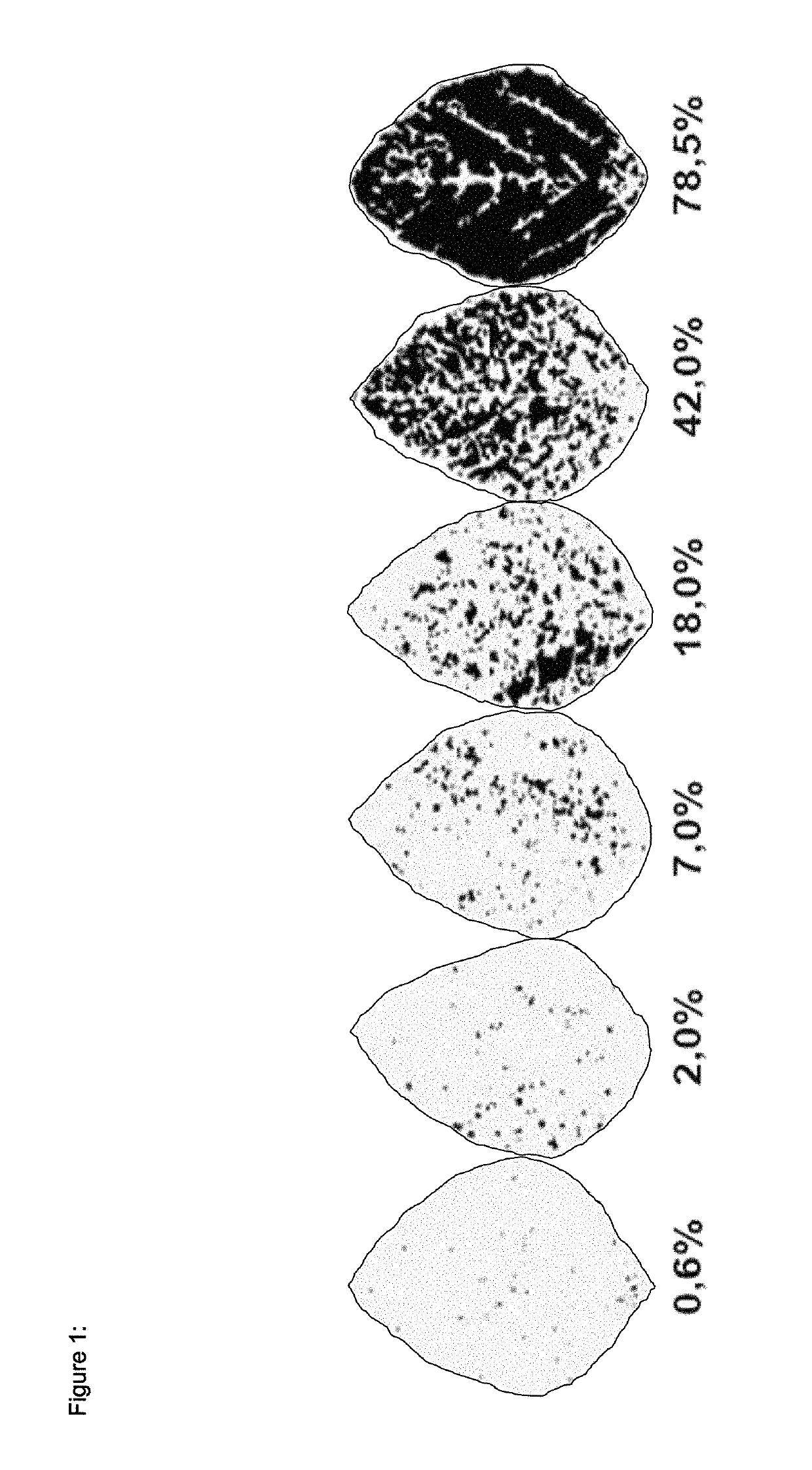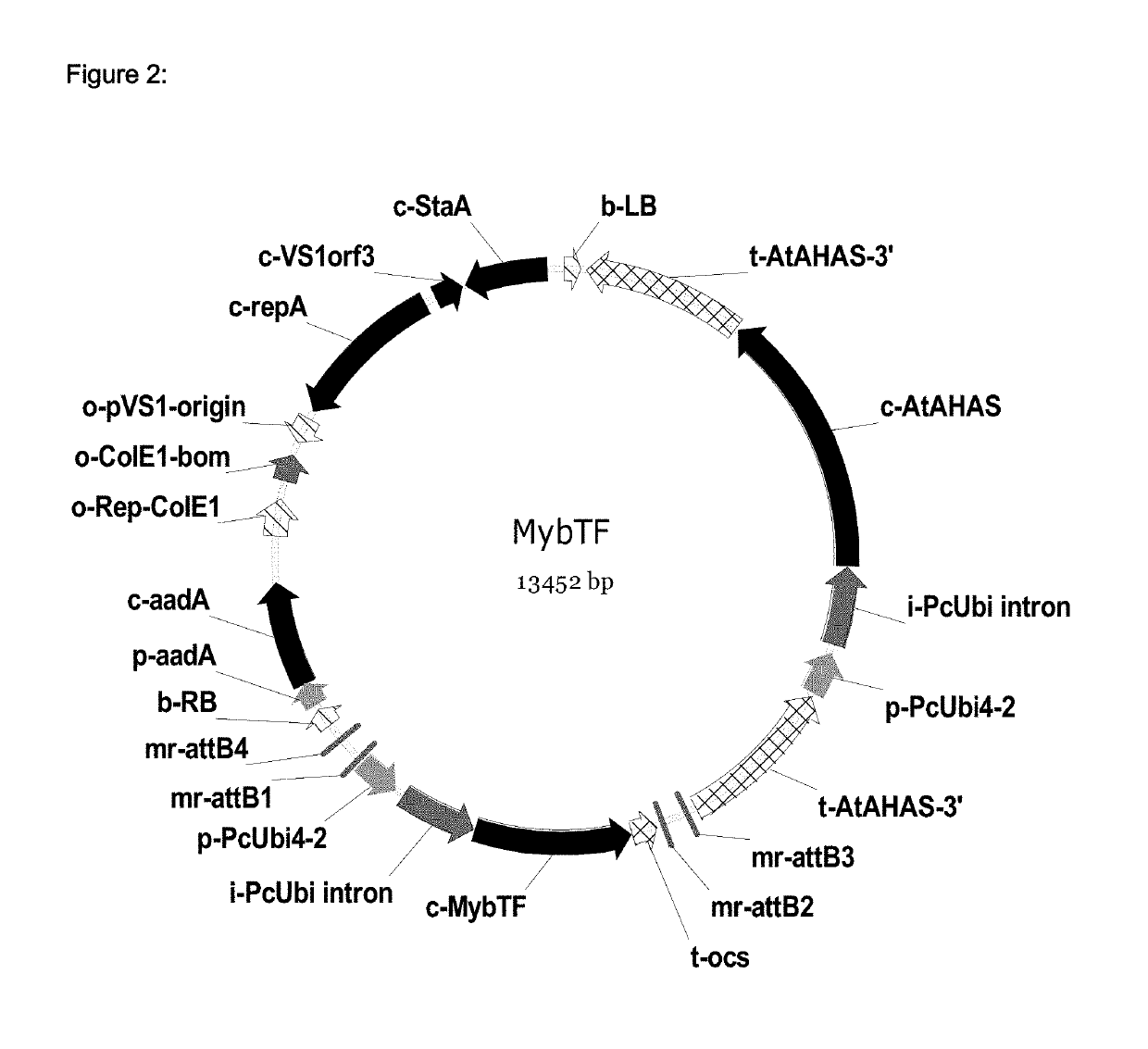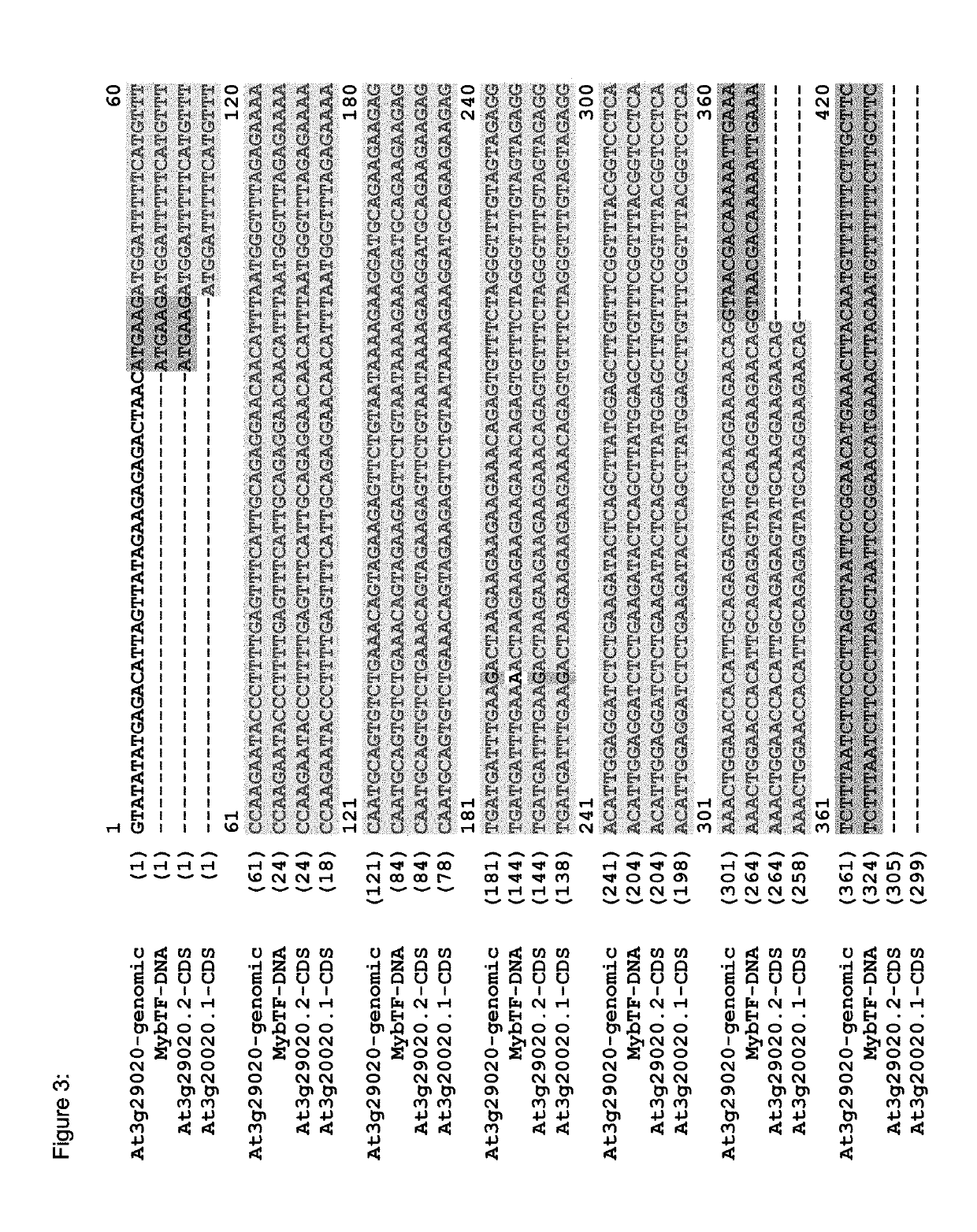Fungal resistant plants expressing MybTF
a technology of mybtf and resistant plants, which is applied in the field of cultivating agricultural crop plants, can solve the problems of not having soy plants with resistance to the entire spectrum of isolates, markedly reduced yields, and high susceptibility to epidemic-like spreading of diseases, and achieves the effect of increasing the expression and/or activity of myb-like genes
- Summary
- Abstract
- Description
- Claims
- Application Information
AI Technical Summary
Benefits of technology
Problems solved by technology
Method used
Image
Examples
example 1
ethods
[0471]The chemical synthesis of oligonucleotides can be affected, for example, in the known fashion using the phosphoamidite method (Voet, Voet, 2nd Edition, Wiley Press New York, pages 896-897). The cloning steps carried out for the purposes of the present invention such as, for example, restriction cleavages, agarose gel electrophoresis, purification of DNA fragments, transfer of nucleic acids to nitrocellulose and nylon membranes, linking DNA fragments, transformation of E. coli cells, bacterial cultures, phage multiplication and sequence analysis of recombinant DNA, are carried out as described by Sambrook et al. Cold Spring Harbor Laboratory Press (1989), ISBN 0-87969-309-6. The sequencing of recombinant DNA molecules is carried out with an MWG-Licor laser fluorescence DNA sequencer following the method of Sanger (Sanger et al., Proc. Natl. Acad. Sci. USA 74, 5463 (1977)).
example 2
f Overexpression Vector Constructs
[0472]The genomic DNA sequence and the optimized cDNAs of the MybTF gene mentioned in this application were generated by DNA synthesis (Geneart, Regensburg, Germany).
[0473]The MybTF DNA (as shown in SEQ ID NO: 1) was synthesized in a way that a Pacl restriction site is located in front of the start-ATG and a Ascl restriction site downstream of the stop-codon. The synthesized DNA was digested using the restriction enzymes Pacl and Ascl (NEB Biolabs) and ligated in a Pacl / Ascl digested Gateway pENTRY-B vector (Invitrogen, Life Technologies, Carlsbad, Calif., USA) in a way that the full-length fragment is located in sense direction between the parsley ubiquitin promoter and the Agrobacterium tumefaciens derived octopine synthase terminator (t-OCS). The PcUbi promoter regulates constitutive expression of the ubi4-2 gene (accession number X64345) of Petroselinum crispum (Kawalleck et al. 1993 Plant Molecular Biology 21(4): 673-684).
[0474]To obtain the bi...
example 3
formation
[0475]The expression vector constructs (see example 2) were transformed into soy.
[0476]3.1 Sterilization and Germination of Soy Seeds
[0477]Virtually any seed of any soy variety can be employed in the method of the invention. A variety of soybean cultivar (including Jack, Williams 82, Jake, Stoddard and Resnik) is appropriate for soy transformation. Soy seeds were sterilized in a chamber with a chlorine gas produced by adding 3.5 ml 12N HCl drop wise into 100 ml bleach (5.25% sodium hypochlorite) in a desiccator with a tightly fitting lid. After 24 to 48 hours in the chamber, seeds were removed and approximately 18 to 20 seeds were plated on solid GM medium with or without 5 μM 6-benzyl-aminopurine (BAP) in 100 mm Petri dishes. Seedlings without BAP are more elongated and roots develop, especially secondary and lateral root formation. BAP strengthens the seedling by forming a shorter and stockier seedling.
[0478]Seven-day-old seedlings grown in the light (>100 μEinstein / m2s) ...
PUM
| Property | Measurement | Unit |
|---|---|---|
| temperature | aaaaa | aaaaa |
| length | aaaaa | aaaaa |
| pH | aaaaa | aaaaa |
Abstract
Description
Claims
Application Information
 Login to View More
Login to View More - R&D
- Intellectual Property
- Life Sciences
- Materials
- Tech Scout
- Unparalleled Data Quality
- Higher Quality Content
- 60% Fewer Hallucinations
Browse by: Latest US Patents, China's latest patents, Technical Efficacy Thesaurus, Application Domain, Technology Topic, Popular Technical Reports.
© 2025 PatSnap. All rights reserved.Legal|Privacy policy|Modern Slavery Act Transparency Statement|Sitemap|About US| Contact US: help@patsnap.com



